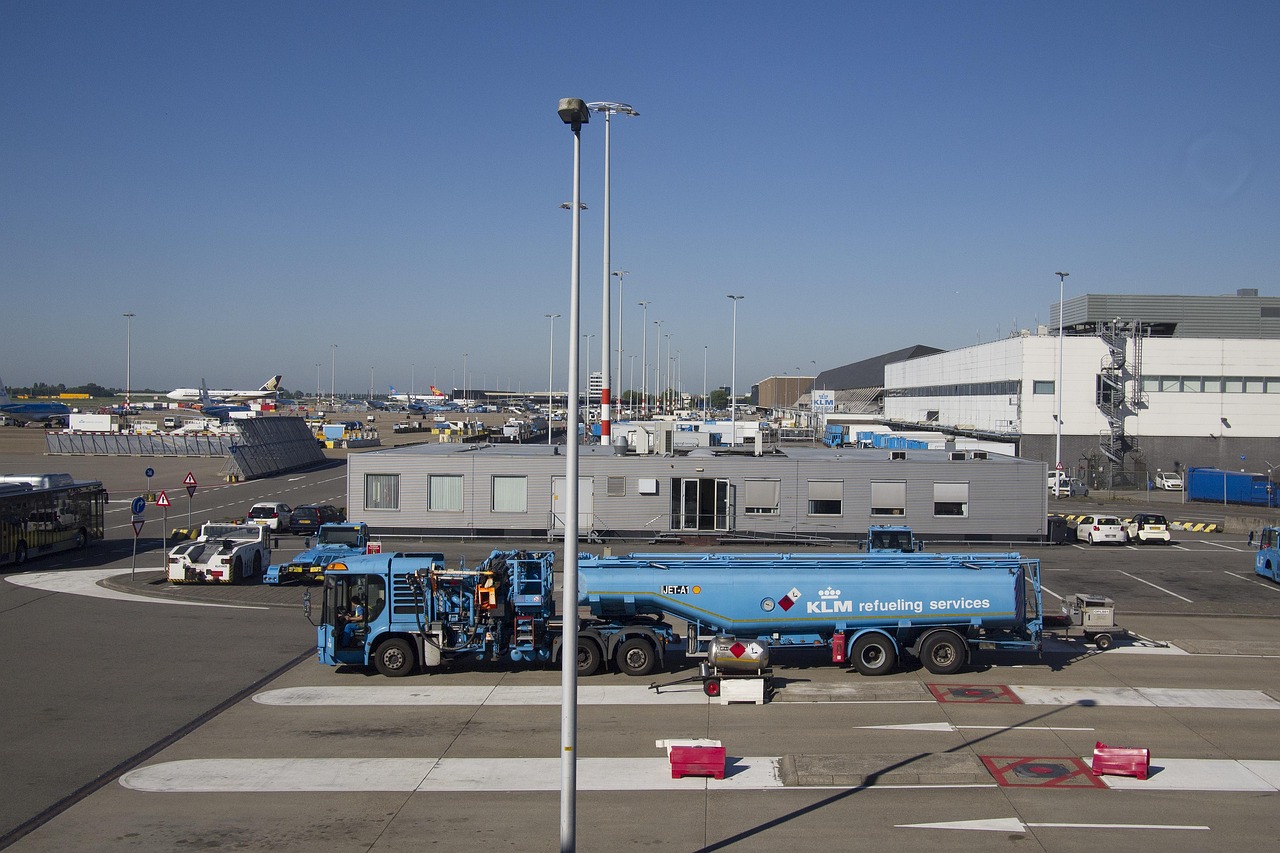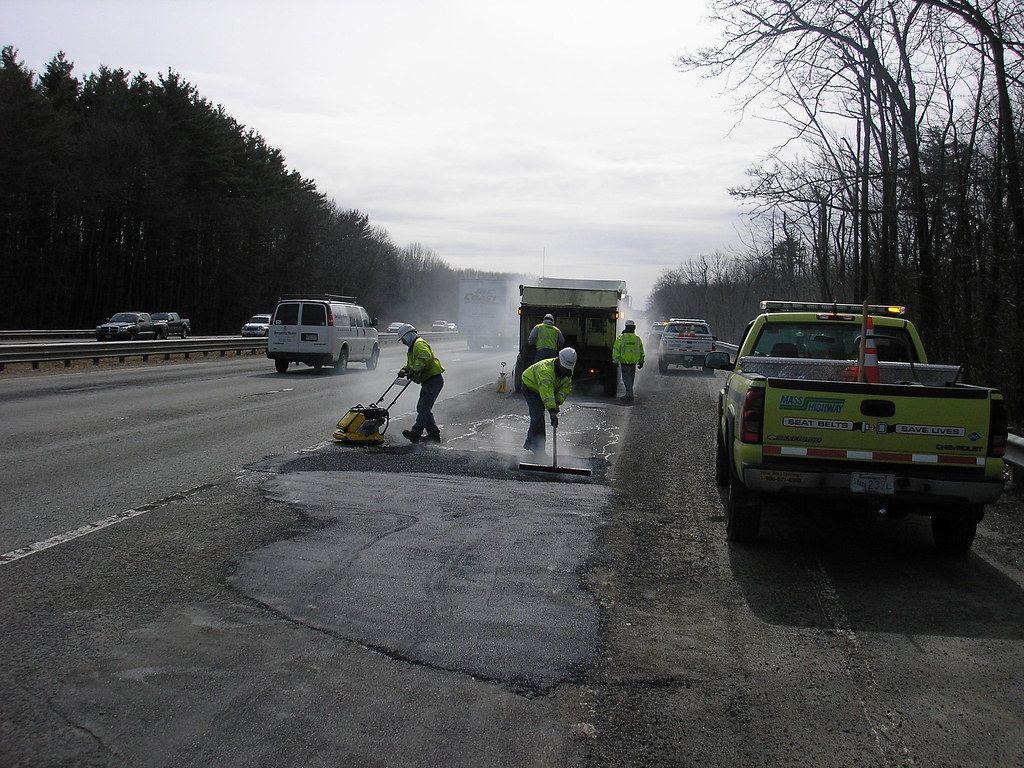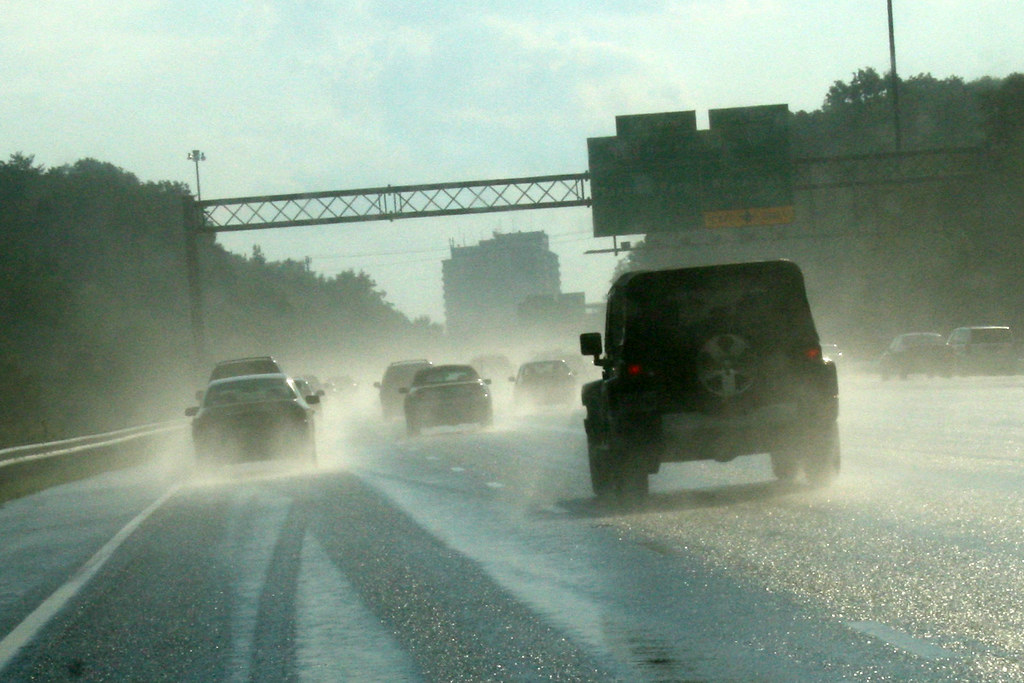
Driving in the rain, an everyday occurrence for many, often presents a complex array of hazards that can transform routine commutes into dangerous situations. While rain frequently breaks periods of intense heat, particularly in monsoon regions, it simultaneously introduces serious challenges to road safety. The statistics are stark: the National Highway Traffic Safety Administration (NHTSA) in the US reports that 445,000 injuries annually result from weather-related accidents, with a significant 46% of these attributed to rain. Such figures underscore the critical need for drivers to understand and mitigate risks associated with wet weather conditions.
Roadways become slick, visibility decreases, and the very dynamics of vehicle control are altered, making driving an exhausting and anxiety-inducing experience for some. The root causes of many unfortunate incidents during rainy seasons are often linked to a lack of basic road discipline, poor infrastructure, and ineffective driving safety policies. However, a significant portion of these accidents stems directly from careless driving practices that, while seemingly minor, become critically threatening when roads are wet. It is imperative that both administrative authorities and individual drivers accept responsibility and collaborate to prevent accidents and ensure safety during rainfall.
Understanding the physical principles behind reduced traction, hydroplaning, and longer stopping distances on wet pavement is the first step toward safer driving. Modern tires, for instance, exhibit a significantly lower coefficient of friction on wet surfaces (around 0.4) compared to dry roads (0.7). This diminished grip is further exacerbated when water mixes with oil and dirt, creating a more viscous film that severely reduces tire traction. When tires cannot effectively displace water from the road surface, they lose contact entirely—a phenomenon known as hydroplaning, which dramatically impairs a driver’s ability to steer and brake. These fundamental changes in road conditions necessitate a profound adjustment in driving behavior, yet many drivers continue to make common, dangerous mistakes.
Let’s delve into some of the most prevalent errors drivers make when confronted with rainy conditions, providing actionable insights to enhance road safety and empower consumers with knowledge to make informed decisions behind the wheel.
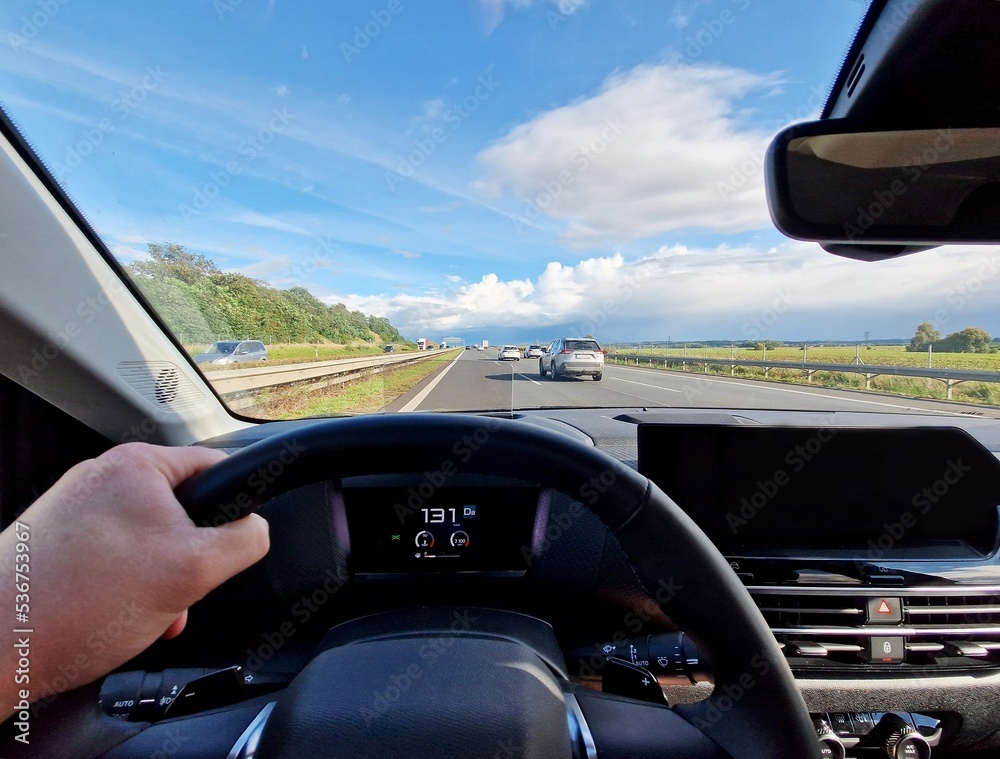
1. **Driving Too Fast for Conditions**Perhaps the most fundamental and dangerous mistake drivers make in the rain is failing to adjust their speed adequately for the prevailing conditions. Speed limits are established for ideal weather, meaning dry roads and clear visibility. When rain begins, even if it’s light, the road surface changes dramatically. Fresh rain, in particular, interacts with oils on the roadway, creating an initial slickness that can be highly treacherous. Continuing to drive at speeds suitable for dry conditions is an open invitation for trouble, as it significantly reduces the time available to react to unforeseen circumstances and dramatically increases the likelihood of losing traction.
The faster a vehicle travels, the less time its tires have to channel water away from the contact patch, making hydroplaning more probable. Hydroplaning occurs most often when vehicles are driving too fast for the wet conditions, causing the tires to ride on a film of water rather than making direct contact with the pavement. This loss of grip renders steering and braking largely ineffective. Therefore, reducing speed is not merely a suggestion but a critical safety imperative. For instance, if one typically drives at 50 mph on a dry road, lowering the speed to 35-40 mph in rain can ensure tires maintain shorter braking distances and safe handling.
Moreover, the simple act of slowing down provides drivers with more time to perceive and process potential hazards, such as standing water, debris, or the sudden actions of other drivers. It allows for a more controlled response to changes in road or traffic conditions, enhancing the overall ability to maintain vehicle control. Consumer Reports’ emphasis on practical, actionable advice strongly advocates for this adjustment: always drive slower on wet roads than you would on dry roads. This proactive reduction in speed is a cornerstone of defensive driving in inclement weather.
Read more about: 15 Classic Cars You Might Want To Skip: An Expert Guide for Discerning Collectors

2. **Using Cruise Control in Wet Conditions**Many drivers, accustomed to the convenience of cruise control on highways, make the critical error of engaging it during wet weather. This mistake can lead to a severe loss of vehicle control and is strongly advised against by safety experts. The core issue with cruise control in rain is its automatic maintenance of a set speed, which precludes the driver from making instantaneous, nuanced adjustments to speed that are often necessary to prevent traction loss.
When a vehicle begins to lose traction or hydroplane on a wet surface, the instinctive and correct driver response is to gently ease off the accelerator, allowing the vehicle to slow down and potentially regain contact with the road. However, with cruise control engaged, this crucial action is impossible. The system continues to apply power to maintain speed, potentially exacerbating the loss of control rather than alleviating it. This can quickly escalate a minor slip into a dangerous skid or hydroplane, leaving the driver with fewer options to recover.
Furthermore, driving in wet weather demands full driver engagement and constant vigilance. The presence of cruise control can inadvertently foster a sense of complacency or divert a driver’s focus, even subtly, from the immediate and evolving road conditions. Safety Connect and other sources consistently advise against its use, emphasizing that drivers must remain fully engaged. By avoiding cruise control, drivers retain direct, immediate command over their vehicle’s speed and power delivery, which is indispensable for safe navigation on slippery roads.
Read more about: Unveiling the Shadow Warriors: Inside the Secret World of Navy SEALs and Their Unmatched Legacy

3. **Following Too Closely**Tailgating, or following another vehicle too closely, is dangerous under any circumstances, but it becomes a recipe for disaster on wet roads. One of the most significant impacts of rain on driving dynamics is the considerable increase in stopping distances. When roads are slick, the reduced friction between tires and pavement means it takes substantially longer for a vehicle to come to a complete stop, even with gentle braking. Failing to account for this extended stopping distance by maintaining an insufficient following distance is a common and perilous mistake.
The context explicitly states that wet roads make it harder to stop quickly and increase stopping distances, meaning drivers need to keep more distance between their vehicle and the one in front. A good rule of thumb, as highlighted, is to double your normal following distance in poor weather conditions. While 2-3 seconds is often recommended for dry conditions, increasing this to 3-5 seconds, or even seven seconds according to some sources, provides a much-needed buffer. This extra space allows drivers significantly more time to react to sudden changes, such as the car ahead braking abruptly or an unexpected obstacle in the road.
Without adequate following distance, a driver may be forced into sudden, hard braking—a maneuver that itself is dangerous on wet roads, as it can induce skidding. Moreover, the spray created by large trucks and buses can severely reduce visibility for following vehicles, making it even more crucial to maintain a greater distance from them. Prioritizing a safe following distance is a practical, actionable step that directly addresses the increased hazards of wet pavement, aligning with Consumer Reports’ focus on consumer safety and informed decision-making.
Read more about: From Anemic to Awkward: Unmasking 15 Muscle Cars That Truly Missed the Mark – And Why We Can’t Forget Them

4. **Not Using Headlights When Visibility Drops**A critical mistake that compromises both a driver’s ability to see and, equally important, their ability to be seen by others, is failing to activate headlights during rain. Heavy rainfall significantly reduces overall visibility, even during daylight hours. While many drivers recognize the need for headlights at night, they often overlook their importance in adverse daytime weather. The context consistently emphasizes that if your windshield wipers are on, your lights should be on, too.
Headlights serve a dual purpose in rain: they illuminate the road ahead, helping the driver perceive obstacles, road markings, and other vehicles more clearly, and they make the vehicle more conspicuous to other drivers and pedestrians. Without headlights, a car can effectively become “invisible” in the driving rain, particularly to oncoming traffic or vehicles approaching from the rear. This increases the risk of collisions, as other road users may not register the presence of the vehicle until it is too late to react safely. The article highlights that in many states, it is also the law to have your lights on when visibility is impaired.
It is also important to differentiate between full headlights and daytime running lights (DRLs). DRLs are often not sufficient in heavy rain because they typically only activate the front lights, leaving the taillights off. For optimal visibility for all road users, full headlights and taillights must be engaged. However, drivers should use low beams rather than high beams in rain, as high beams can reflect off the rain droplets, creating glare and further reducing the driver’s own visibility. This clear, concise advice underscores the consumer-centric approach of ensuring maximum safety for all involved.
Read more about: Unlock Major Savings: 15 Essential Car Maintenance Hacks That Can Save You Over $1000 Annually (Even on Brand New Models)

5. **Slamming the Brakes When Skidding**When a vehicle begins to skid on a wet road, a natural and often instinctual reaction for many drivers is to slam on the brakes. However, this immediate and forceful application of the brakes is a dangerous mistake that can severely worsen the situation and lead to a complete loss of control. The context clearly advises against hard braking when a car starts to slide, explaining that it can lock up the wheels, thereby reducing the ability to steer and increasing the chances of spinning out.
Slamming on the brakes, especially on a slippery surface, can cause the wheels to lose all rotational movement while the vehicle is still in motion. This prevents the driver from steering the car in the desired direction, as steering control relies on the wheels being able to roll. If the wheels are locked, the car will continue to slide in whatever direction inertia takes it, often resulting in a spin. Modern vehicles with Anti-lock Braking Systems (ABS) mitigate this somewhat by preventing wheel lock-up, but even with ABS, aggressive braking on a skid is not the ideal response.
The correct response, as repeatedly emphasized, is to ease off the accelerator and steer gently in the direction you want the car to go. If the vehicle has ABS, apply steady pressure to the brake pedal without pumping them. If it has standard brakes, gentle pumping may be necessary to prevent lock-up. This nuanced approach allows the tires to regain traction and provides the driver with the best chance to recover control. Knowing how to handle a skid calmly and correctly is a vital piece of actionable advice for any driver encountering wet weather challenges.
Read more about: Beyond Panic Braking: Cop-Approved Strategies for Confident and Skid-Free Driving in the Rain

6. **Overconfidence in All-Wheel Drive (AWD)**Many drivers who own SUVs or vehicles equipped with All-Wheel Drive (AWD) systems harbor a false sense of security when driving in adverse weather, including rain. This overconfidence represents a significant and potentially fatal mistake. While AWD undoubtedly provides superior traction when accelerating, particularly on slippery surfaces, it does not fundamentally alter a vehicle’s braking or turning capabilities. The laws of physics, especially concerning friction and inertia, remain constant regardless of the drivetrain configuration.
The context explicitly warns that AWD can give a false sense of security, often leading drivers to maintain faster speeds and attempt riskier maneuvers than they otherwise would. The enhanced acceleration traction of an AWD vehicle might allow it to get moving more easily from a stop or to accelerate through a patch of water without immediate slippage. However, when it comes to slowing down or negotiating a turn, the vehicle’s tires are still subject to the same reduced grip on wet pavement as any other car. Braking distances will still be longer, and the vehicle is just as susceptible to hydroplaning or skidding if speed is too high or steering inputs are too abrupt.
This mistake underscores the importance of objective, factual understanding rather than relying on perceived advantages. An AWD vehicle’s ability to maintain grip during acceleration does not translate into an immunity to the dangers of wet roads. Drivers of AWD vehicles must still adhere to all the same safety precautions—reducing speed, increasing following distance, and avoiding sudden movements—as drivers of two-wheel-drive cars. This piece of practical advice helps debunk a common misconception, empowering consumers to make safer decisions independent of their vehicle’s features.
7. **Making Sudden Movements (Steering, Braking, Accelerating)**On wet roads, the margin for error is significantly reduced, and smooth, controlled inputs are paramount. A common mistake drivers make is to perform sudden movements with the steering wheel, brake pedal, or accelerator. This aggressive or abrupt driving style, which might be tolerated on dry pavement, can immediately destabilize a vehicle when traction is compromised by rain, leading directly to a loss of control.
Gentle steering, braking, and accelerating are universally recommended best practices for driving on wet surfaces. For instance, if a driver suddenly turns the steering wheel, the rapid shift in vehicle weight combined with reduced tire grip can easily induce a skid. Similarly, as discussed, slamming on the brakes can lock up wheels and cause a loss of steering. Conversely, applying too much power to the driven wheels, especially mid-corner, can also lead to skidding, particularly oversteer in rear-wheel-drive vehicles or understeer in front-wheel-drive vehicles.
The context consistently emphasizes that “Never apply too much of anything in your car when it rains. And by anything, I mean the brakes, gas pedal, and steering wheel.” It clarifies that gentle acceleration will not make a driver go faster in the rain, but it will help maintain control. Adopting a smoother, more deliberate driving style allows the tires to maintain consistent contact and traction with the road surface, minimizing sudden weight transfers and sudden demands on limited grip. This approach aligns perfectly with the Consumer Reports style of providing clear, actionable advice that prioritizes consumer safety through improved driving habits.
Navigating rainy roads safely extends beyond immediate driving behaviors; it also encompasses crucial proactive measures and reactive skills that many drivers frequently overlook. While the initial instinct might be to focus solely on vehicle control during a downpour, a comprehensive approach to wet weather safety demands attention to vehicle preparation, effective hazard mitigation, and maintaining a high level of situational awareness. These often-neglected aspects can be the difference between a safe passage and a perilous incident. Let’s explore these common oversight and reactive mistakes, providing thorough, actionable advice to empower every driver.

8. **Neglecting Tire Maintenance**One of the most critical yet frequently overlooked aspects of safe driving in the rain is the condition of a vehicle’s tires. Tires are the sole point of contact between the car and the road, making their integrity paramount, especially when friction is reduced by water. Many drivers fail to regularly check their tire tread depth and pressure, inadvertently compromising their vehicle’s ability to maintain traction and avoid hydroplaning on wet surfaces.
The tread on a tire is specifically designed with grooves and channels to displace water from beneath the tire’s contact patch, allowing the rubber to grip the road surface. When tire treads are worn down, their ability to perform this vital function is severely diminished. Research, such as that conducted by MIRA with Goodyear tires, clearly demonstrates that tires with adequate tread depth (e.g., 3mm) have significantly shorter braking distances—up to 25% shorter than those with a minimal 1.6mm tread depth. A simple penny test, where you insert a penny into the tread with Lincoln’s head down, can quickly indicate if your tires are dangerously worn if you can see the top of his head.
Beyond tread depth, proper tire inflation is equally crucial. Under-inflated or over-inflated tires do not distribute pressure evenly across the road surface, which can reduce the effective contact area and impair their ability to channel water away. This makes them more susceptible to hydroplaning and less effective in braking. Regular checks, ideally once a month and before long trips, ensure tires are inflated to the manufacturer’s recommended pounds per square inch (PSI), which can usually be found in the owner’s manual or on a sticker inside the driver’s door.
Furthermore, investing in quality tires from reputable manufacturers, rather than opting for cheaper alternatives that may perform poorly on wet surfaces, is a sound safety decision. Trusted brands often incorporate advanced designs and rubber compounds optimized for wet weather performance, offering superior grip and longer lifespan. Ultimately, well-maintained, high-quality tires are your best defense against the reduced traction of rainy roads, offering peace of mind and significantly enhancing safety.
Read more about: Mechanics’ Top Frustrations: 14 Bad Car Habits You Need to Stop Now to Save Money and Your Vehicle’s Life
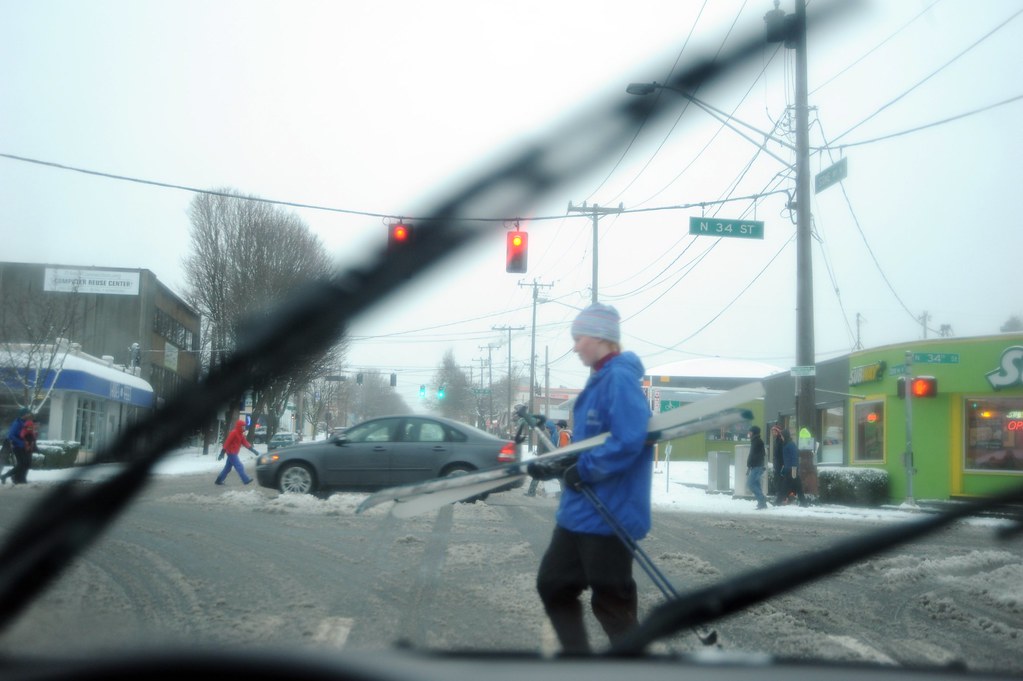
9. **Failing to Ensure Proper Visibility (Wipers, Defrosters, Lights – Usage and Condition)**Visibility is unequivocally paramount when driving in the rain, yet many drivers make mistakes not just in *using* their visibility aids, but in ensuring their *condition* and *optimal application*. Reduced visibility, caused by heavy rainfall and internal window fogging, poses an immediate and direct threat to safety, hindering a driver’s ability to perceive hazards and other road users.
Windshield wipers are a primary tool for maintaining clear vision, but their effectiveness hinges on their condition and correct usage. Worn-out wiper blades, characterized by streaking, skipping, or squeaking, cannot clear water efficiently, leaving dangerous smears on the windshield. It is advisable to replace wiper blades every 6 to 12 months for maximum performance. Moreover, adjusting wiper speed according to the intensity of the rain is crucial. Modern vehicles offer various speeds, including intermittent settings, allowing drivers to match wiper action to conditions—from a light drizzle to a heavy downpour—without creating unnecessary distraction or glare.
Internal fogging of windows is another pervasive visibility issue in rainy weather, often ignored until it becomes severe. This condensation is caused by humidity differences between the cabin and the outside air. To combat this, drivers should utilize their vehicle’s defroster system. Activating both front and rear defrosters, setting the climate control to a comfortable warm temperature with the A/C on (which dehumidifies the air), and directing airflow to the upper vents can quickly clear fog. Crucially, avoiding the air recirculation mode ensures fresh, dehumidified air continuously enters the cabin, preventing further condensation from passenger breath or external moisture.
Finally, while Section 1 covered the importance of turning on headlights, the broader mistake is failing to ensure all lights—headlights and taillights—are *functional* and *clean*. Fogged, dirty, or malfunctioning lights diminish their intended purpose, making your vehicle less visible to others. A quick wipe with a microfiber cloth can significantly improve brightness. Additionally, using low beams in heavy rain is critical, as high beams can reflect off rain droplets, creating severe glare that impairs the driver’s own vision and can blind oncoming traffic. Ensuring these visibility tools are in prime working order and used appropriately is a non-negotiable aspect of safe wet weather driving.

10. **Underestimating the Dangers of Standing Water and Flooded Roads**One of the most dangerous and often underestimated hazards drivers face in the rain is standing water and flooded roads. Many drivers mistakenly believe their vehicle can safely navigate through puddles, failing to recognize the profound risks of hydroplaning, stalling, or even being swept away. This oversight can lead to catastrophic consequences, as just a few inches of water can cause significant trouble.
Large puddles of water, especially those encountered at speed, are prime conditions for hydroplaning, where tires lose all contact with the road surface and ride on a film of water. This phenomenon renders steering and braking largely ineffective, turning the vehicle into an uncontrollable projectile. Even four inches of water can cause a vehicle to stall if water splashes into the engine compartment, potentially leading to costly damage and stranding occupants in dangerous locations. The risk escalates rapidly; just two feet of running water can carry away large trucks and SUVs, a stark warning against driving through moving water where the bottom cannot be seen.
Drivers must proactively avoid areas known to be prone to flooding, planning alternate routes if heavy rains are expected. Local news and radio often broadcast warnings and guidelines, which should be taken seriously. Encountering a ‘Road Closed’ sign by standing water must be obeyed without question; these barriers are in place for safety, not inconvenience. The adage ‘Turn around, don’t drown’ is a vital piece of actionable advice, emphasizing that the unknown depth and current of floodwaters are not worth the risk. Never attempt to drive through water if you are unsure of its depth, or if it appears to be moving.
Furthermore, standing water can conceal underlying dangers such as potholes, debris, or crumbling road surfaces, which can cause significant vehicle damage or loss of control. Driving off-road during rain is particularly perilous, as puddles can be deceptively deep, leading to vehicles becoming stuck. Maintaining vigilance for water accumulation and taking a different route are essential precautions that prioritize safety over perceived convenience, aligning with the Consumer Reports ethos of consumer protection.
Read more about: A Perilous Miscalculation: When Pirates Attacked the Unyielding Power of Warships and Faced Swift Defeat
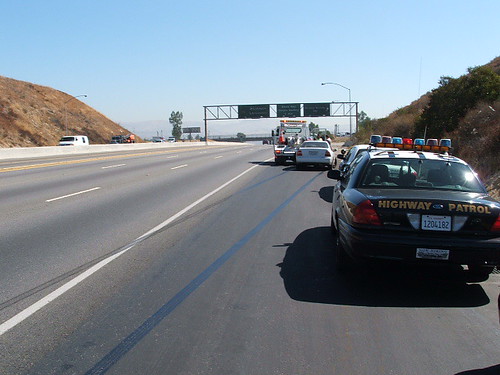
11. **Improper Reaction to Skids or Hydroplaning**Despite all precautions, vehicles can sometimes lose traction, leading to skidding or hydroplaning. The critical mistake here is often an improper, panicked reaction, rather than a calm and controlled response. While Section 1 highlighted the dangers of slamming on the brakes, the broader issue is the failure to execute the correct sequence of actions required to regain control, which can escalate a minor slip into a severe accident.
When a vehicle begins to skid or hydroplane, the most important action is to remain calm and avoid sudden, aggressive inputs. The instinct to slam the brakes or sharply turn the steering wheel is counterproductive. Instead, the correct procedure is to gently ease your foot off the accelerator. This allows the vehicle to slow down gradually, giving the tires an opportunity to regain contact and traction with the road surface. Braking should be avoided initially, as it can worsen the loss of control by locking up wheels or further reducing the ability to steer.
Simultaneously with easing off the accelerator, drivers should gently steer in the direction they want the car to go. Overcorrecting with the steering wheel can cause the vehicle to swing wildly in the opposite direction once traction is regained. For front-wheel-drive vehicles experiencing understeer (front end skidding outside the turn), maintaining the steering wheel angle while lifting off the gas is often effective. For rear-wheel-drive vehicles experiencing oversteer (back end skidding), a slight, controlled counter-steer (steering into the skid) combined with easing off power, or even a light touch of the accelerator to shift weight, may be necessary. The key is smooth, minimal, and controlled adjustments.
Modern cars equipped with Anti-lock Braking Systems (ABS) require steady pressure on the brake pedal if braking becomes necessary during a skid, as ABS will manage wheel lock-up. For vehicles without ABS, gentle pumping of the brakes might be required. The goal is always to allow the tires to roll, which maintains steering control. Knowing these precise responses and practicing them mentally can transform a dangerous situation into a manageable one, emphasizing Consumer Reports’ focus on empowering drivers with critical skills.
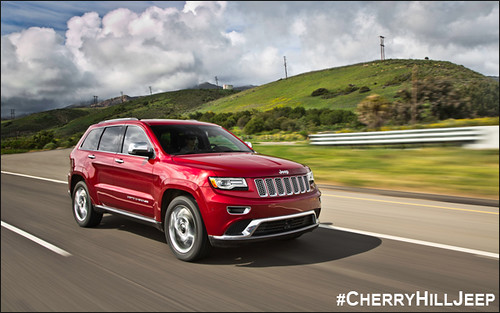
12. **Lack of Proactive Vehicle Preparation**While many drivers focus on immediate actions during rainfall, a pervasive mistake is neglecting proactive vehicle preparation and general maintenance *before* hitting wet roads. The readiness of a vehicle’s various components significantly influences its safety performance in adverse conditions. Relying solely on real-time driving adjustments without ensuring the vehicle itself is up to the task is a serious oversight.
Beyond tires and wipers, which are often discussed, a comprehensive pre-drive checklist is essential. This includes examining the vehicle’s major components such as acceleration, brakes, and transmission to ensure they are functioning correctly. Checking fluid levels—engine oil, brake fluid, and windshield washer fluid—is vital. Properly filled washer fluid, especially with rain-resistant formulas, can be invaluable for maintaining clear visibility. Any loose or impaired wiring should be fixed, and all lights (headlights, taillights, brake lights, turn signals) must be tested to confirm they are fully operational and clean.
Mirrors should be cleaned and adjusted for optimal rear and side visibility. Ensuring the fuel tank is adequately full can prevent unexpected stalls, particularly if extended driving or unexpected detours due to flooding become necessary. These seemingly minor checks contribute collectively to a vehicle’s overall reliability and responsiveness when subjected to the demands of wet roads, reducing the likelihood of unexpected malfunctions that could lead to dangerous situations.
Ultimately, regular vehicle maintenance is not merely about extending the life of the car; it is a fundamental aspect of driving safety, particularly in challenging conditions. Investing in routine checks and addressing issues promptly ensures that every critical system, from brakes to electrical components, is prepared for the reduced traction and visibility that rain introduces. This thorough, detailed approach to vehicle readiness aligns perfectly with the Consumer Reports mission to provide practical, actionable advice for consumer safety.
Read more about: Iceland’s Northern Lights: Your Ultimate Guide to an Unforgettable Aurora Borealis Adventure, Especially Now!

13. **Failure to Adjust to Environmental Factors and Maintain Alertness**Safe driving in the rain demands more than just reacting to the immediate road surface; it requires constant awareness of the broader environmental context and maintaining an unwavering level of alertness. A common mistake is a lapse in this holistic awareness, leading drivers to be caught off guard by unpredictable elements such as gusty winds, the actions of other road users, or unforeseen obstacles. This lack of comprehensive vigilance can quickly turn a manageable situation into a crisis.
Rain often brings with it strong winds, which can exert significant force on vehicles, pushing them around on the road and making them harder to control. High-profile vehicles, such as SUVs and trucks, are particularly susceptible to these gusts. Drivers must maintain a firm grip on the steering wheel and give wide berth to these larger vehicles, anticipating that they might be more affected by crosswinds. Being aware of weather forecasts, particularly flash flood watches or warnings, is a proactive step that allows drivers to prepare for or avoid the worst conditions.
Moreover, maintaining alertness extends to actively observing the path ahead for standing water, potholes, or debris that may have been dislodged by rain. It also means paying continuous attention to other cars and pedestrians. For instance, being mindful of pedestrians, especially near puddles, prevents accidental splashing and ensures their safety. Drivers should also be aware of the ‘road spray’ from large trucks and buses, which can severely reduce visibility for following vehicles, necessitating greater following distances or lane changes.
This heightened state of awareness, where driving is the sole concern, involves continuously asking oneself questions like, “Am I driving too fast for the conditions on the road?” or “Am I too close to the car in front?” Knowing your route in advance, and planning alternate routes to avoid bodies of water or congested areas, further contributes to this proactive safety mindset. This detailed focus on comprehensive awareness ensures that drivers are not just reacting, but anticipating and mitigating risks effectively, embodying the Consumer Reports principle of empowering consumers with knowledge.
Read more about: 14 Driving Pro Tricks: Stay Alert on Long Drives—Simple Habits That Prevent Fatigue
14. **Ignoring the Option to Pull Over**Perhaps the simplest yet most overlooked safety measure during severe rainfall is knowing when to stop driving altogether. Many drivers make the dangerous mistake of ‘toughing it out’ through conditions that exceed their comfort or vehicle capabilities, often due to a misguided sense of urgency or overconfidence. This can expose them and others to extreme risk when visibility becomes too low or vehicle control becomes unmanageable.
There are clear thresholds when driving becomes prohibitively dangerous. If rainfall is so heavy that you cannot clearly see the vehicles in front of you, or if you find yourself struggling to maintain control of your own vehicle despite adopting all other safety measures, it is time to pull over. The context explicitly states that ‘If you can’t see cars in front of you or are having difficulty controlling your vehicle, simply pull over and wait for the rain to slow down.’ This is not a sign of weakness but a responsible, expert-recommended decision that prioritizes safety above all else.
Finding a safe place to pull over is also crucial. Drivers should look for well-lit areas away from active traffic, such as parking lots, rest areas, or even the shoulder of the road if no other option is available. Once stopped, turning on hazard lights makes the vehicle visible to other drivers, and it is safest to remain inside the vehicle with seatbelts fastened until conditions visibly improve. This decision to pause allows the worst of the storm to pass, significantly reducing the risk of an accident and alleviating the stress associated with driving in treacherous weather.
Prioritizing personal and public safety by knowing when to take a break from the road is a practical, actionable piece of advice that every driver should embrace. It underscores the ultimate consumer-centric approach: that no appointment, errand, or journey is worth risking lives. By acknowledging one’s limits and acting decisively, drivers not only protect themselves but also contribute to the overall safety of the road, reinforcing the core message of informed decision-making in adverse conditions.
### Conclusion: Mastering Monsoon Driving for Safer Roads
Navigating the challenges of driving in the rain is a skill developed through knowledge, preparation, and disciplined practice. As we’ve explored, the array of mistakes drivers make on wet roads, from neglecting fundamental vehicle maintenance to misjudging environmental hazards, can turn an everyday commute into a perilous journey. The statistics on weather-related accidents, with rain as a major contributor, serve as a sobering reminder of the gravity of these oversights.
However, every challenge presents an opportunity for improvement. By internalizing the principles of defensive driving—adjusting speed, maintaining ample following distance, ensuring vehicle readiness, and cultivating heightened awareness—drivers can significantly mitigate risks. The importance of properly maintained tires, functional wipers, and understanding how to react calmly to a skid cannot be overstated. Equally vital is the wisdom to recognize when conditions are simply too dangerous, and the safest course of action is to pull over and wait.
Read more about: Beyond the Hype: The Real Reasons Your New iPhone Isn’t Perfect (and How to Master the Fixes)
Ultimately, road safety during the rainy season is a collective responsibility. While administrative authorities play their part in maintaining infrastructure, the onus largely falls on individual drivers to make informed, cautious decisions behind the wheel. Equipping oneself with knowledge, as presented here, transforms potential anxiety into confident, controlled driving. Embrace these actionable insights not just as tips, but as a commitment to safer roads for everyone. Stay alert, stay prepared, and drive with an unwavering dedication to safety.


